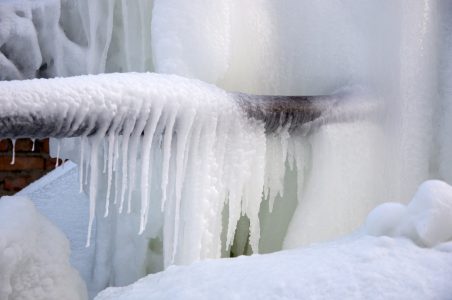Were you searching for guidance on Helpful Tips to Prevent Frozen Pipes this Winter?

Winter can wreak havoc on your plumbing, especially by freezing pipelines. Right here's just how to stop it from occurring and what to do if it does.
Introduction
As temperature levels decrease, the risk of icy pipelines increases, possibly resulting in pricey repair services and water damage. Recognizing exactly how to stop frozen pipelines is important for homeowners in chilly environments.
Prevention Tips
Shielding vulnerable pipes
Wrap pipes in insulation sleeves or utilize warm tape to protect them from freezing temperatures. Focus on pipes in unheated or exterior areas of the home.
Home heating methods
Maintain interior rooms effectively heated up, particularly areas with pipes. Open cupboard doors to permit cozy air to circulate around pipes under sinks.
Just how to identify frozen pipes
Seek decreased water flow from faucets, uncommon odors or sounds from pipelines, and noticeable frost on exposed pipelines.
Long-Term Solutions
Architectural modifications
Consider rerouting pipes away from exterior walls or unheated locations. Include additional insulation to attic rooms, cellars, and crawl spaces.
Updating insulation
Purchase high-grade insulation for pipelines, attic rooms, and wall surfaces. Correct insulation assists preserve constant temperatures and reduces the risk of icy pipelines.
Securing Outside Plumbing
Yard pipes and outdoor taps
Separate and drain yard pipes before winter. Mount frost-proof spigots or cover exterior faucets with shielded caps.
Understanding Frozen Pipelines
What creates pipelines to freeze?
Pipes freeze when revealed to temperature levels below 32 ° F (0 ° C) for prolonged periods. As water inside the pipes freezes, it expands, putting pressure on the pipe wall surfaces and possibly creating them to rupture.
Dangers and damages
Frozen pipelines can bring about water disturbances, residential or commercial property damage, and pricey repair services. Burst pipelines can flooding homes and cause extensive architectural damage.
Signs of Frozen Water Lines
Determining icy pipes early can stop them from bursting.
What to Do If Your Pipes Freeze
Immediate activities to take
If you suspect frozen pipes, maintain taps open to ease stress as the ice thaws. Make use of a hairdryer or towels taken in warm water to thaw pipes slowly.
Conclusion
Stopping frozen pipes calls for proactive actions and quick actions. By understanding the causes, indicators, and preventive measures, house owners can shield their plumbing during winter.
5 Ways to Prevent Frozen Pipes
Drain Outdoor Faucets and Disconnect Hoses
First, close the shut-off valve that controls the flow of water in the pipe to your outdoor faucet. Then, head outside to disconnect and drain your hose and open the outdoor faucet to allow the water to completely drain out of the line. Turn off the faucet when done. Finally, head back to the shut-off valve and drain the remaining water inside the pipe into a bucket or container. Additionally, if you have a home irrigation system, you should consider hiring an expert to clear the system of water each year.
Insulate Pipes
One of the best and most cost-effective methods for preventing frozen water pipes is to wrap your pipes with insulation. This is especially important for areas in your home that aren’t exposed to heat, such as an attic. We suggest using foam sleeves, which can typically be found at your local hardware store.
Keep Heat Running at 65
Your pipes are located inside your walls, and the temperature there is much colder than the rest of the house. To prevent your pipes from freezing, The Insurance Information Institute suggests that you keep your home heated to at least 65 degrees, even when traveling. You may want to invest in smart devices that can keep an eye on the temperature in your home while you’re away.
Leave Water Dripping
Moving water — even a small trickle — can prevent ice from forming inside your pipes. When freezing temps are imminent, start a drip of water from all faucets that serve exposed pipes. Leaving a few faucets running will also help relieve pressure inside the pipes and help prevent a rupture if the water inside freezes.
Open Cupboard Doors
Warm your kitchen and bathroom pipes by opening cupboards and vanities. You should also leave your interior doors ajar to help warm air circulate evenly throughout your home.
:strip_icc()/snow-outdoor-faucet-pipes-4af65d1e5e904fb1aa7bf74071fe5d89.jpg)
Do you appreciate more info about How to prepare your home plumbing for winter weather? Give feedback directly below. We'd be delighted to find out your feelings about this blog entry. In hopes that you visit us again in the near future. Enjoyed our write-up? Please share it. Help another person check it out. Many thanks for going through it.
This Page
Comments on “Important Tips for Preventing Frozen Plumbing in Winter Conditions”